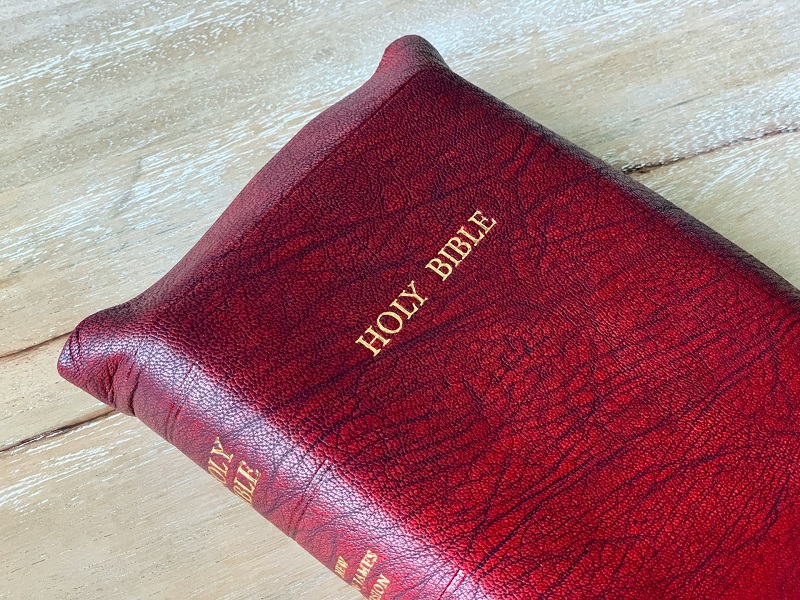Imagine a world where betrayal and unwavering loyalty collide in a moment of divine destiny.
This dramatic tension is vividly captured in our Matthew 26 summary, which documents the final hours of Jesus before his crucifixion.
This chapter is not just a historical account; it offers profound insights into human nature and the complexities of faith.
Join us as we break down these crucial events and explore their timeless implications for believers and non-believers alike.
Matthew 26 Summary (Explained)

In Matthew 26, the stage is set for the culmination of Jesus’ earthly ministry as tensions mount in Jerusalem.
The chapter opens with a stark prophecy of Christ’s impending crucifixion, underscoring the inevitability of His sacrificial mission.
This prophetic foreshadowing invites readers to reflect on the weight of betrayal — highlighted by Judas Iscariot’s chilling agreement with the chief priests.
Judas represents the complexities of human nature, illustrating how personal ambition can distort loyalty and trust.
The poignant narrative shifts to the Last Supper, where Jesus redefines the Passover celebration.
He transforms the bread and wine into symbols of His body and blood, deepening the covenant that ties believers to Him.
This act not only foreshadows His sacrifice but also invites readers to contemplate the profound gift of communion and community.
As the chapter unfolds, the garden of Gethsemane becomes a place of divine vulnerability; Jesus’ earnest prayers reveal the tension between His humanity and divinity.
Here, the agony of anticipation and obedience fuels a deeper understanding of what it means to surrender fully to God’s will.
This act resonates profoundly in the lives of modern believers navigating their own struggles.
✅ Matthew 26 Commentary (Key Verses)
Explore Matthew 26, where Jesus faces betrayal, prepares for the cross, and demonstrates humility, obedience, and love — showing us how to trust God in every moment.
The Plot to Kill Jesus
“Then one of the Twelve, who was called Judas Iscariot, went to the chief priests and asked, ‘What are you willing to give me if I deliver him over to you?’ So they counted out for him thirty pieces of silver.” — Matthew 26:14–15 (NIV)
Commentary 1: Even Jesus’ closest followers could betray Him, showing that God’s plan works despite human failure.
Commentary 2: We are reminded to stay vigilant and faithful, even when others around us act selfishly or sinfully.
Jesus Anointed at Bethany
“While Jesus was in Bethany in the home of Simon the Leper, a woman came to him with an alabaster jar of very expensive perfume, which she poured on his head as he was reclining at the table.” — Matthew 26:6–7 (NIV)
Commentary 1: The woman’s act of worship and devotion reminds us to honor Christ with our hearts, time, and resources.
Commentary 2: True worship is sacrificial, personal, and recognizes the worth and glory of Jesus above all else.
The Last Supper — A New Covenant
“Jesus took bread, gave thanks and broke it, and gave it to his disciples, saying, ‘Take and eat; this is my body.’ Then he took a cup, gave thanks and offered it to them, saying, ‘Drink from it, all of you. This is my blood of the covenant, which is poured out for many for the forgiveness of sins.” — Matthew 26:26–28 (NIV)
Commentary 1: Jesus institutes the new covenant, showing His willingness to sacrifice Himself for humanity’s salvation.
Commentary 2: Taking communion reminds believers to reflect on His love, forgiveness, and the gift of eternal life.
Jesus Predicts Peter’s Denial
“Then Jesus told them, ‘This very night you will all fall away on account of me, for it is written: “I will strike the shepherd, and the sheep of the flock will be scattered.” — Matthew 26:31 (NIV)
Commentary 1: Even the most faithful disciples struggle under pressure, teaching us humility and dependence on God’s grace.
Commentary 2: Jesus’ prediction demonstrates His omniscience and reassures us that God knows our weaknesses and remains faithful.
Gethsemane — Prayer and Submission
“Then Jesus went with his disciples to a place called Gethsemane, and he said to them, ‘Sit here while I go over there and pray.’… ‘My Father, if it is possible, may this cup be taken from me. Yet not as I will, but as you will.” — Matthew 26:36, 39 (NIV)
Commentary 1: Jesus models true obedience and surrender to God’s will, even in the face of immense suffering.
Commentary 2: Prayer strengthens us to follow God’s plan and trust Him in moments of fear, anxiety, and uncertainty.
The Arrest of Jesus
“While he was still speaking, Judas, one of the Twelve, arrived. With him was a large crowd armed with swords and clubs, sent from the chief priests and the elders of the people. Now the betrayer had arranged a signal with them: ‘The one I kiss is the man; arrest him.” — Matthew 26:47–48 (NIV)
Commentary 1: Betrayal and suffering often come suddenly, yet Jesus remains composed and fulfills God’s plan.
Commentary 2: We can find courage and peace knowing that God is in control, even when circumstances feel chaotic or unfair.
✅ Matthew 26 Lessons & Takeaways
1. Trust God’s plan: Even betrayal and trials are part of His greater purpose.
2. Worship sacrificially: Honor Jesus with our devotion, time, and resources.
3. Reflect on Christ’s sacrifice: Communion reminds us of His love and forgiveness.
4. Obedience and prayer: Following God requires surrender, even when it’s difficult.
5. Faith during trials: God’s presence brings strength and peace in times of fear or uncertainty.
Matthew 26 Summary (Conclusion)
Matthew 26 shows us the depth of Jesus’ love and obedience as He prepares for the cross.
From betrayal to the Last Supper, and from prayer in Gethsemane to His arrest, Jesus models humility, surrender, and trust in God’s plan.
Believers are reminded to stay faithful, worship sacrificially, pray persistently, and trust God’s timing.
Even in the face of trials, Jesus’ life points us to hope, love, and salvation.
FAQs About Matthew 26 (NIV)
1. Why did Judas betray Jesus?
Judas chose to betray Jesus for thirty pieces of silver, fulfilling prophecy and demonstrating human weakness, yet God’s plan remained perfect.
2. What is the significance of the Last Supper?
It established the new covenant between God and humanity, pointing to Jesus’ sacrificial death for forgiveness of sins.
3. Why did Jesus pray in Gethsemane?
He prayed for strength to obey God’s will, showing humility and dependence on the Father, even in great distress.
4. What does Peter’s predicted denial teach us?
It reminds us of human weakness and the need for God’s grace, encouraging humility and reliance on Him.
5. How can we follow Jesus’ example during trials?
By trusting God, remaining obedient, praying faithfully, and keeping faith even in difficult or unexpected circumstances.
Other Blog Posts

Grounded in faith and driven by purpose, I’m a Christian blogger and online research specialist with a passion for God’s Word, lifelong learning, and healthy living.
